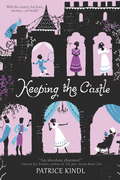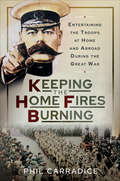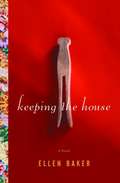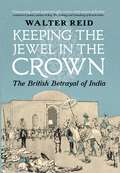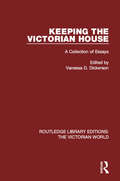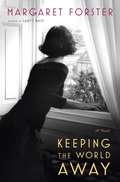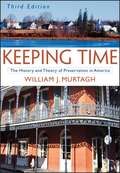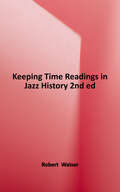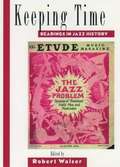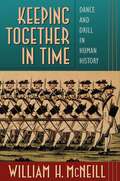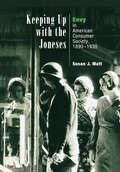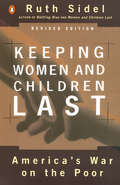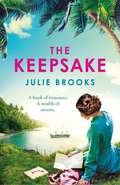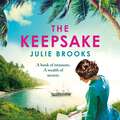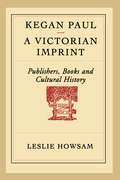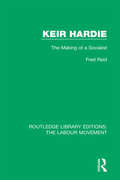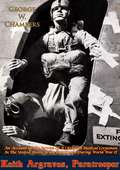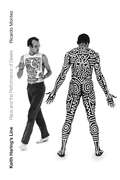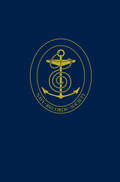- Table View
- List View
Keeping the Castle
by Patrice KindlSeventeen-year-old Althea is the sole support of her entire family, and she must marry well. But there are few wealthy suitors--or suitors of any kind--in their small Yorkshire town of Lesser Hoo. Then, the young and attractive (and very rich) Lord Boring arrives, and Althea sets her plans in motion. There's only one problem; his friend and business manager Mr. Fredericks keeps getting in the way. And, as it turns out, Fredericks has his own set of plans . . . This witty take on the classic Regency--Patrice Kindl's first novel in a decade--is like literary champagne!“If you’re a fan of I Capture the Castle you will love this sharply funny tale of courtship. A delicious confection. ” -- Polly Shulman, author of Enthusiasm “Take one Austenian heroine in desperate financial straits. Put her in a crumbling castle, give her two evil stepsisters and some very unsuitable suitors. Make it funny! Patrice Kindl’s Keeping the Castle is an absolute charmer!” -- Karen Joy Fowler, author of The Jane Austen Book Club .
Keeping the Home Fires Burning: Entertaining the Troops at Home and Abroad During the Great War
by Phil CarradiceKeeping the Home Fires Burning tells the story of how the troops and the general public were kept happy and content during the First World War. Between 1914 and 1918 there was entertainment of the masses for the sole purpose of promotion of the war effort. It was the first time that a concerted effort to raise and sustain morale was ever made by any British government and was a combination of government sponsored ideas and lucky happenstance. It was all picked up and used by the new Propaganda Ministry. The range of activities was wide and varied, from poetry to cinema, from music hall singers and artists to the creation of battlefield heroes. There was postcard humour and deliberate veneration of philanthropists - and war participants - like Woodbine Willie. The theme of Keeping the Home Fires Burning is backed up by 40 illustrations from the time, including participants, posters, battlefield views and so on.
Keeping the House: A Novel
by Ellen BakerSet in the conformist 1950s and reaching back to span two world wars, Ellen Baker's superb novel is the story of a newlywed who falls in love with a grand abandoned house and begins to unravel dark secrets woven through the generations of a family. Like Whitney Otto's How to Make an American Quilt in its intimate portrayal of women's lives, and reminiscent of novels by Elizabeth Berg and Anne Tyler, Keeping the House is a rich tapestry of a novel that introduces a wonderful new fiction writer. When Dolly Magnuson moves to Pine Rapids, Wisconsin, in 1950, she discovers all too soon that making marriage work is harder than it looks in the pages of the Ladies' Home Journal. Dolly tries to adapt to her new life by keeping the house, supporting her husband's career, and fretting about dinner menus. She even gives up her dream of flying an airplane, trying instead to fit in at the stuffy Ladies Aid quilting circle. Soon, though, her loneliness and restless imagination are seized by the vacant house on the hill. As Dolly's life and marriage become increasingly difficult, she begins to lose herself in piecing together the story of three generations of Mickelson men and women: Wilma Mickelson, who came to Pine Rapids as a new bride in 1896 and fell in love with a man who was not her husband; her oldest son, Jack, who fought as a Marine in the trenches of World War I; and Jack's son, JJ, a troubled veteran of World War II, who returns home to discover Dolly in his grandparents' house. As the crisis in Dolly's marriage escalates, she not only escapes into JJ's stories of his family's past but finds in them parallels to her own life. As Keeping the House moves back and forth in time, it eloquently explores themes of wartime heroism and passionate love, of the struggles of men's struggles with fatherhood and war and of women's conflicts with issues of conformity, identity, forbidden dreams, and love.Beautifully written and atmospheric, Keeping the House illuminates the courage it takes to shape and reshape a life, and the difficulty of ever knowing the truth about another person's desires. Keeping the House is an unforgettable novel about small-town life and big matters of the heart.Advance praise for Keeping the House"Ellen Baker's first novel is a wonder! Keeping the House is a great big juicy family saga, a romantic page-turner with genuine characters written with a perfect sense of history, time, and place. Her portrayal of the American housewife is hilarious and heartbreaking. I couldn't have liked it more!"-Fannie Flagg, author of Can't Wait to Get to Heaven"Ellen Baker's first novel, Keeping the House, is a quilt that grids a small Midwestern town in the middle of the last century. Under this writer's deft hands, each square is a story, a mystery, an indiscretion, a tale of the great house and grand family who once ruled there. Even more, it captures the roles of women then: both the living embodiments of demure ideals, and those who couldn't fit the pattern. Edith Wharton's novels of domestic despair and display come to mind with each page."-Jacquelyn Mitchard, author of The Deep End of the Ocean"A born storyteller, Ellen Baker has written an enthralling family saga filled with three generations of memorable characters and capturing the dreams and frustrations of twentieth-century women in wonderful, spot-on historical detail."-Faith Sullivan, author of Gardenias and The Cape Ann"Ellen Baker has written the novel I've been waiting to read for a very long time. It's the book you want to curl up with, the book you rush home to, the book you wish you'd written. In Keeping the House, she serves up the complexities of family relationships, the anguish of victims of wars, the innermost thoughts of women, and the social mores of the past. Seasoned with mysteries that kept me devouring pages, this is one huge gourmet feast of a book for readers to savor. I look forward to every delicious book this author writes."-Bev Marshall, author of Walking Through Shadows and Right as RainFrom the Hardcover edition.
Keeping the Jewel in the Crown: The British Betrayl of India
by Walter ReidAn in-depth look at what truly happened when the Great Britain gave India its independence, from the author of Five Days from Defeat. When India became independent in 1947, the general view, which has prevailed until now, is that Britain had been steadily working for an amicable transfer of power for decades. In this book, Walter Reid argues that nothing could be further from the truth. With reference to a vast amount of documentary material, from private letters to public records and state papers, Reid shows how Britain held back political progress in India for as long as possible—a policy which led to unimaginable chaos and suffering when independence was granted, and which created a legacy of hatred and distrust that continues to this day. Praise for Keeping the Jewel in the Crown &“A fascinating, robust and provocative version of the sunset of the Raj.&” —Lawrence James, author of Raj: The Making and Unmaking of British India &“A thorough and hard-hitting account . . . presented with clarity and sobriety.&” —BBC History Magazine (UK) &“An excellent and original work . . . A meticulously researched, pioneering study that will appeal to many in both countries.&” —The Open (India) &“It is a rare book that will alter the way you look at one of history&’s pivotal events and one of its greatest tragedies, but this is one of them.&” —Matt Rubin, Washington Times
Keeping the Peace: The Aldermaston Story
by David HawkingsIn 1940 two scientists, refugees from Nazi Germany, wrote a memorandum which has to prove one of the most significant documents of the twentieth century. In it, they outlined proposes for the manufacture of a uranium fuelled 'super bomb'. The paper pprepelled Britain into the forefront of research into nuclear weapons and lead, through the collaboration of British and American scientists in the manhattan Project, to the decisive ending of the Second World War. One of the British scientists, William Penney, was chosen to lead the UK's nuclear weapons program after the war and went on to be the first Director of Atomic Weapons Reaser Establishment at Aldermaston. Since then, the name 'Aldermaston' has become synonymous with Britain's nuclear deterrent. This book tells the fascinating story of Aldermaston and the other sites which for half a century have made a unique contribution to the defence of the realm. It's publication is particularly welcome in the year in which AWE Aldermaston marks its fiftieth anniversary
Keeping the Victorian House: A Collection of Essays (Routledge Library Editions: The Victorian World #15)
by Vanessa D. DickersonFirst published in 1995. The essays in this volume demonstrate how Victorian women took up various positions along a continuum that ranged from the desire of Shelley’s creature for the power and acceptance it associated with the house to the rejection of Brontë’s heroine of the immobility and powerlessness she ultimately experienced there. More specifically the essays in this volume explore the nature of the Victorian woman’s domestic relations by centring in one activity that most informed her place in what was often the father’s house: housekeeping. The essays in this edition determine how writers, especially novelists, both male and female, used housekeeping to construct, reconstruct, represent, and inscribe the female self and condition. This title will be of interest to students of history and literature.
Keeping the World Away
by Margaret ForsterGwen, a bold and spirited young English artist, defies convention and sets out to study in Paris, where she has a tumultuous affair with the inspiring, controlling sculptor Rodin. But as the relationship cools, Gwen feels lonely and adrift as she awaits the ever more infrequent visits from her lover. Attempting to restore her artistic vision and recapture her true self, Gwen pours out her soul onto a canvas, creating an intimate painting of a quiet corner of her attic room.Lost, found, stolen, sold, and fought over, the painting enchants all who possess it. First it falls into the hands of Charlotte, a dreamy intellectual with artistic leanings-though little talent. In turn the work finds its way to the lovely, bright Stella; the destitute but willful Lucasta; self-sufficient Ailsa; and, finally, young, curious Gillian. All of whom long for a tranquil golden place such as the one depicted in the painting, a haven where they can "keep the world away."Praise for Keeping the World Away:"Evocative . . . an apparently simple yet potent work of art."-The New York Times Book Review"Highly recommended . . . One small painting, a still life of a corner of an attic room, is the thread that ties this moving novel together."-Library Journal (starred review)"It is the painting's power to evoke tranquility that Forster so effectively celebrates."-Richmond Times-Dispatch"Haunting . . . revealing . . . exquisitely drawn."-The Washington Post Book World"An intimate, subtly crafted, satisfying read."-Kirkus ReviewsFrom the Trade Paperback edition.
Keeping Time: The History and Theory of Preservation in America
by William J. MurtaghThe historic preservation movement has had a huge influence on America's built landscape for the past thirty years. Discover the cornerstone primer on the topic -- Keeping Time. This edition features a wealth of new material, including new chapters on preservation values in oral-based cultures, international preservation, and future developments in the field. In addition, you'll find a clear, concise survey of preservation movements history, complete with: Helpful coverage of the theory and practice driving the movement; Expanded material on landscape preservation; and, New information on scientific conservation, cultural corridors, and historic tourism.
Keeping Time: Readings in Jazz History
by Robert WalserFeaturing over 70 thought-provoking selections drawn from contemporary journalism, reviews, program notes, memoirs, interviews, and other sources, Keeping Time: Readings in Jazz History, Second Edition, brings to life the controversies and critical issues that have accompanied over 100 years of jazz history. This unique volume gives voice to a wide range of perspectives that stress different reactions to and uses of jazz, both within and across communities, enabling readers to see that jazz is not just about names, dates, and chords, but rather about issues and ideas, cultural activities, and experiences that have affected people deeply in a great variety of ways. <p><p>Selections include contributions from well-known figures such as Jelly Roll Morton, Billie Holiday, Charles Mingus, Louis Armstrong, Dizzy Gillespie, and Miles Davis; from renowned writers including Langston Hughes, Norman Mailer, and Ralph Ellison; and from critics and historians ranging from Gunther Schuller and Christopher Small to Sherrie Tucker and George Lipsitz. This second edition features thirteen new selections concentrating on recent jazz scenes and updated headnotes throughout, which provide historical context for each selection and point out issues for thinking and discussion. Filled with insightful writing, Keeping Time aims to increase historical awareness, provoke critical thinking, and encourage lively classroom discussion as students relive the intriguing story of jazz.
Keeping Time: Readings in Jazz History
by Robert WalserDrawing from contemporary journalism, reviews, program notes, memoirs, interviews, and other sources, Keeping Time lets you experience, first hand, the controversies and critical issues that have accompanied jazz from its very birth. Edited by Robert Walser, these sixty-two thought provoking pieces offer a wealth of insight into jazz.
Keeping Together in Time: Dance and Drill in Human History
by William H. McNeillCould something as simple and seemingly natural as falling into step have marked us for evolutionary success? In Keeping Together in Time one of the most widely read and respected historians in America pursues the possibility that coordinated rhythmic movement--and the shared feelings it evokes--has been a powerful force in holding human groups together. As he has done for historical phenomena as diverse as warfare, plague, and the pursuit of power, William H. McNeill brings a dazzling breadth and depth of knowledge to his study of dance and drill in human history. From the records of distant and ancient peoples to the latest findings of the life sciences, he discovers evidence that rhythmic movement has played a profound role in creating and sustaining human communities. The behavior of chimpanzees, festival village dances, the close-order drill of early modern Europe, the ecstatic dance-trances of shamans and dervishes, the goose-stepping Nazi formations, the morning exercises of factory workers in Japan--all these and many more figure in the bold picture McNeill draws. A sense of community is the key, and shared movement, whether dance or military drill, is its mainspring. McNeill focuses on the visceral and emotional sensations such movement arouses, particularly the euphoric fellow-feeling he calls "muscular bonding." These sensations, he suggests, endow groups with a capacity for cooperation, which in turn improves their chance of survival. A tour de force of imagination and scholarship, Keeping Together in Time reveals the muscular, rhythmic dimension of human solidarity. Its lessons will serve us well as we contemplate the future of the human community and of our various local communities.
Keeping Up with the Joneses
by Susan J. MattA century ago many Americans condemned envy as a destructive emotion and a sin. Today few Americans expect criticism when they express envy, and some commentators maintain that the emotion drives the economy. This shift in attitude is Susan Matt's central concern. Keeping up with the Joneses: Envy in American Consumer Society, 1890-1930 examines a key transition in the meaning of envy for the American middle class. Although people certainly have experienced envy throughout history, the expansion of the consumer economy at the turn of the twentieth century dramatically reshaped the social role of the emotion. Matt looks at how different groups within the middle class--men in white-collar jobs, bourgeois women, farm families, and children--responded to the transformation in social and cultural life.Keeping Up with the Joneses traces how attitudes about envy changed as department stores, mail-order catalogs, magazines, movies, and advertising became more prevalent, and the mass production of imitation luxury goods offered middle- and working-class individuals the opportunity to emulate upper-class life. Between 1890 and 1910 moralists sought to tame envy and emulation in order to uphold a moral economy and preserve social order. They criticized the liberal-capitalist preoccupation with personal striving and advancement and praised the virtue of contentment. They admonished the bourgeoisie to be satisfied with their circumstances and cease yearning for their neighbors' possessions. After 1910 more secular commentators gained ground, repudiating the doctrine of contentment and rejecting the notion that there were divinely ordained limits on what each class should possess. They encouraged everyone to pursue the objects of desire. Envy was no longer a sin, but a valuable economic stimulant.The expansion of consumer economy fostered such institutions as department stores and advertising firms, but it also depended on a transformation in attitudes and emotional codes. Matt explores the ways gender, geography, and age shaped this transformation. Bridging the history of emotions and the history of consumerism, she uncovers the connection between changing social norms and the growth of the consumer economy.
Keeping Watch: A History Of American Time
by Michael O'MalleyA history of the transition from natural to mechanical sources for time, Keeping Watch explores the invention of Standard Time Zones and daylight saving as well as the mass production of watches and clocks.
Keeping Women and Children Last Revised
by Ruth SidelIn Keeping Women and Children Last, Ruth Sidel shows how America, in its search for a post-Cold War enemy, has turned inward to target single mothers on welfare, and how politicians have scapegoated and stigmatized female-headed families both as a method of social control and to divert attention from the severe problems that Americans face. She reveals the real victims of poverty--the millions of children who suffer from societal neglect, inferior education, inadequate health care, hunger, and homelessness. In this new edition, focusing on the passage of the Personal Responsibility and Work Opportunity Reconciliation Act of 1996, Sidel reevaluates our social policy, assessing the impact of the "end of welfare as we know it" on America's poor, especially its women and children.
The Keepsake: A thrilling dual-time novel of long-buried family secrets
by Julie BrooksA book of treasures. A wealth of secrets.The Keepsake is a thrilling dual-time novel, with a fascinating, complex woman at its heart, wealth of twists, turns and secrets, and an absolute book club treat, perfect for fans of Lucinda Riley, Rachel Rhys and Hannah Richell.'Wow! What a spellbindingly beautiful masterpiece of a book! . . . It is without doubt one of my top reads ever! Brilliantly researched, beautifully written . . . I guarantee you will love it and it will leave you changed' RENITA D'SILVA'I love historical fiction and this added the extra touch of a mystery . . . I would love to read more from Julie Brooks!' ⭐ ⭐ ⭐ ⭐ ⭐ reader review'[An] interesting and captivating historical mystery and five stars from me' ⭐ ⭐ ⭐ ⭐ ⭐ reader review'I really enjoyed this story. It had an intriguing plot, excellent research . . . and a double love story to boot' ⭐ ⭐ ⭐ ⭐ reader review'A totally engrossing dual time line novel that was both well researched and also had great depth with the characters' ⭐ ⭐ ⭐ ⭐ ⭐ reader review'This book was beautifully written . . . A story which kept me hooked, with mysteries to uncover' ⭐ ⭐ ⭐ ⭐ ⭐ reader review'A pure DELIGHT' ⭐ ⭐ ⭐ ⭐ ⭐ reader review..............................................Saturday: Pot-au-feu for luncheon. Father willed away inheritance. Betrayed by Edward.1832. The morning after her father's funeral, Prudence Merryfield wakes to the liberating thought that this is the first day of her new life. At thirty-five and unmarried, she is now mistress of her own fate. But a cruel revelation at the reading of her father's will forces Prudence to realise that taking only the most drastic action will set her free. Present day. Eliza is gifted a family heirloom by her aunt - a Georgian pocket book, belonging to her ancestor, Prudence Merryfield, whose existence reverberates through the lives of generations of Eliza's family, the Ambroses. Intrigued by what she reads inside, Eliza is drawn more and more into the infamous 'Merryfield Mystery'. What happened to Prudence who so bravely dared to defy convention two hundred years ago - then disappeared?..............................................Praise for Julie Brooks's The Secrets of Bridgewater Bay:'A sweeping tale of family secrets, betrayal, jealousy, ambition and forbidden romance . . . Fans of The Thorn Birds and Downton Abbey will love the epic scope of this novel' ALI MERCER'I thoroughly enjoyed this immersive story which spans both generations and continents. The evocative details and impeccable research make for a delightful reading experience and I can pay it no greater compliment other than to say, I wish I'd written it' KATHRYN HUGHES'This is an epic dual-time novel which draws the reader in right from the start and keeps you in thrall until the very last page. The writing is superb, the descriptions detailed, lush and evocative' CHRISTINA COURTENAY'A gripping story full of family secrets: the price of love and loss within two generations . . . convincing and poignant' LEAH FLEMING'Rich in evocative detail - the complex mystery kept me guessing right up to the last page' MUNA SHEHADI
The Keepsake: A thrilling dual-time novel of long-buried family secrets
by Julie BrooksA book of treasures. A wealth of secrets.The Keepsake is a thrilling dual-time novel, with a fascinating, complex woman at its heart, wealth of twists, turns and secrets, and an absolute book club treat, perfect for fans of Lucinda Riley, Rachel Rhys and Hannah Richell.'Wow! What a spellbindingly beautiful masterpiece of a book! . . . It is without doubt one of my top reads ever! Brilliantly researched, beautifully written . . . I guarantee you will love it and it will leave you changed' RENITA D'SILVA'Very well-written and a real page turner . . . Highly recommended' ⭐ ⭐ ⭐ ⭐ ⭐ reader review'I love historical fiction and this added the extra touch of a mystery . . . I would love to read more from Julie Brooks!' ⭐ ⭐ ⭐ ⭐ ⭐ reader review'[An] interesting and captivating historical mystery and five stars from me' ⭐ ⭐ ⭐ ⭐ ⭐ reader review'I really enjoyed this story. It had an intriguing plot, excellent research . . . and a double love story to boot'⭐ ⭐ ⭐ ⭐ reader review..............................................Saturday: Pot-au-feu for luncheon. Father willed away inheritance. Betrayed by Edward.1832. The morning after her father's funeral, Prudence Merryfield wakes to the liberating thought that this is the first day of her new life. At thirty-five and unmarried, she is now mistress of her own fate. But a cruel revelation at the reading of her father's will forces Prudence to realise that taking only the most drastic action will set her free. Present day. Eliza is gifted a family heirloom by her aunt - a Georgian pocket book, belonging to her ancestor, Prudence Merryfield, whose existence reverberates through the lives of generations of Eliza's family, the Ambroses. Intrigued by what she reads inside, Eliza is drawn more and more into the infamous 'Merryfield Mystery'. What happened to Prudence who so bravely dared to defy convention two hundred years ago - then disappeared?..............................................Praise for Julie Brooks's The Secrets of Bridgewater Bay:'A sweeping tale of family secrets, betrayal, jealousy, ambition and forbidden romance . . . Fans of The Thorn Birds and Downton Abbey will love the epic scope of this novel' ALI MERCER'I thoroughly enjoyed this immersive story which spans both generations and continents. The evocative details and impeccable research make for a delightful reading experience and I can pay it no greater compliment other than to say, I wish I'd written it' KATHRYN HUGHES'This is an epic dual-time novel which draws the reader in right from the start and keeps you in thrall until the very last page. The writing is superb, the descriptions detailed, lush and evocative' CHRISTINA COURTENAY'A gripping story full of family secrets: the price of love and loss within two generations . . . convincing and poignant' LEAH FLEMING'Rich in evocative detail - the complex mystery kept me guessing right up to the last page' MUNA SHEHADI
The Keepsake: A thrilling dual-time novel of long-buried family secrets
by Julie BrooksA book of treasures. A wealth of secrets.The Keepsake is a thrilling dual-time novel, with a fascinating, complex woman at its heart and a wealth of twists, turns and secrets...............................................Saturday: Pot-au-feu for luncheon. Father willed away inheritance. Betrayed by Edward.1832. The morning after her father's funeral, Prudence Merryfield wakes to the liberating thought that this is the first day of her new life. At thirty-five and unmarried, she is now mistress of her own fate. But a cruel revelation at the reading of her father's will forces Prudence to realise that taking only the most drastic action will set her free. Present day. Eliza is gifted a family heirloom by her aunt - a Georgian pocket book, belonging to her ancestor, Prudence Merryfield, whose existence reverberates through the lives of generations of Eliza's family, the Ambroses. Intrigued by what she reads inside, Eliza is drawn more and more into the infamous 'Merryfield Mystery'. What happened to Prudence who so bravely dared to defy convention two hundred years ago - then disappeared?..............................................Praise for Julie Brooks's The Secrets of Bridgewater Bay:'A sweeping tale of family secrets, betrayal, jealousy, ambition and forbidden romance . . . Fans of The Thorn Birds and Downton Abbey will love the epic scope of this novel' ALI MERCER'I thoroughly enjoyed this immersive story which spans both generations and continents. The evocative details and impeccable research make for a delightful reading experience and I can pay it no greater compliment other than to say, I wish I'd written it' KATHRYN HUGHES'This is an epic dual-time novel which draws the reader in right from the start and keeps you in thrall until the very last page. The writing is superb, the descriptions detailed, lush and evocative' CHRISTINA COURTENAY'A gripping story full of family secrets: the price of love and loss within two generations . . . convincing and poignant' LEAH FLEMING'Rich in evocative detail - the complex mystery kept me guessing right up to the last page' MUNA SHEHADI(P) 2022 Headline Publishing Group Ltd
Keepsake
by Ann RitnerKeepsake is the gigantic empire built by Michael Breet, a miner in the time of the Spanish-American War. He loves his gentle, aristocratic wife and has built Keepsake to surround her with beauty and elegance. Unfolding amidst the glorious natural beauty of the Arizona canyon country, this is the romantic, compelling story of how the daughter of one of America’s fabulous Robber Barons faced the temptations and disillusionment of a gilded era before she found her own place in life.
Kegan Paul - A Victorian Imprint
by Leslie HowsamThe Kegan Paul imprint was created and its reputation for a distinguished list of titles established during a forty-year period from 1871 to 1911. Several publishers, and their firms, were involved in the development of the imprint during this period, beginning with Henry S. King and Company, and following in 1877 with Charles Kegan Paul and his partner Alfred Chenevix Trench. A financial crisis in 1889 forced an amalgamation with two other businesses and the new firm changed managers periodically until George Routledge and Son took over the business in 1911.Leslie Howsam combines biography and analytic bibliography in her study of the Kegan Paul imprint to demonstrate the value of publishing history as a contribution to the scholarly study of the book. Basing her research on intensive work in the company's surviving archives and supplemented by extensive library work with the actual books, Howsam looks at the wide range of significant titles published for the imprint. In addition, she reconstructs a biographical and business history of the firm based on published and unpublished accounts of the individuals involved, including the publishers and their families, and looks at the effects of changing business practices. The focus of Victorian Imprint Kegan Paul is the duality of imprint: the publisher's imprint upon a list of books, and publisher's personalities, the imprint of their taste and judgment on the culture in which they lived.
Keir Hardie: The Making of a Socialist (Routledge Library Editions: The Labour Movement #25)
by Fred ReidFirst published in 1978. This book is an essay in labour biography. Labour leaders of the nineteenth century are often enigmatic personalities, and James Keir Hardie is no exception. The main purpose of this study is to penetrate the heart of the enigma that is Kier Hardie. Why does he remain so puzzling? The author explores Hardie’s childhood and his interest and involvement within the Labour Party. This title will be of interest to students of politics and history.
Keith Argraves, Paratrooper: An Account Of The Service Of A Christian Medical Corpsman In The United States Army Paratroops During World War II
by George W. ChambersThe fascinating true story of Keith Argraves, a man of faith, who served as a medic and paratrooper during World War II.Keith Argraves served in the 506th Parachute Infantry Regiment, he enlisted in 1941 and through much effort finally succeeded in being accepted into the all-volunteer elite paratroopers as a medic. Steeled with faith in God he refused to carry a gun into action. His first taste of action was in North Africa flying into Oran and tending the wounded at the fighting around Taffarui airport. He was later captured by German soldiers of the Afrika Korps after volunteering to go on a "suicide mission" to demolish enemy assets. His adventures in the prisoner of war camps have become legend and read life fiction, but they are indeed fact.
Keith Haring (Lives of the Artists)
by Simon DoonanKeith Haring was a revolutionary artist, who transformed the art world during his short but impactful life. Brought to life by Simon Doonan, Creative Director for Barneys New York, this new pocket-sized biography tells his inspirational story.Revolutionary and renegade, Keith Haring was an artist for the people, creating an instantly recognisable repertoire of symbols - barking dogs, space-ships, crawling babies, clambering faceless people - which became synonymous with the volatile culture of 1980s. Like a careening, preening pinball, Keith Haring playfully slammed into all aspects of this decade - hip-hop, new-wave, graffiti, funk, art, style, gay culture - and brought them together.Haring's fanatical drive propelled him into the orbit of the most interesting people of his time: Jean Michel Basquiat envied him; Warhol, William Boroughs and Grace Jones collaborated with him. Madonna and he shared the same tastes in men. Famous at 25, dead from AIDS at 31, Keith Haring is remembered as a Pied Piper, an unpretentious communicator who appeared happiest when mentoring a gang of kids, arming them with brushes and attacking the nearest wall.A series of brief biographies of the great artists, Lives of the Artists takes as its inspiration Giorgio Vasari's five-hundred-year-old masterwork, updating it with modern takes on the lives of key artists past and present. Focusing on the life of the artist rather than examining their work, each book also includes key images illustrating the artist's life. Hardbound, but pocket-sized, the books each sport a specially-commissioned portrait of their subject on the half-jacket.
Keith Haring (Lives of the Artists)
by Simon DoonanKeith Haring was a revolutionary artist, who transformed the art world during his short but impactful life. Brought to life by Simon Doonan, Creative Director for Barneys New York, this new pocket-sized biography tells his inspirational story.Revolutionary and renegade, Keith Haring was an artist for the people, creating an instantly recognisable repertoire of symbols - barking dogs, space-ships, crawling babies, clambering faceless people - which became synonymous with the volatile culture of 1980s. Like a careening, preening pinball, Keith Haring playfully slammed into all aspects of this decade - hip-hop, new-wave, graffiti, funk, art, style, gay culture - and brought them together.Haring's fanatical drive propelled him into the orbit of the most interesting people of his time: Jean Michel Basquiat envied him; Warhol, William Boroughs and Grace Jones collaborated with him. Madonna and he shared the same tastes in men. Famous at 25, dead from AIDS at 31, Keith Haring is remembered as a Pied Piper, an unpretentious communicator who appeared happiest when mentoring a gang of kids, arming them with brushes and attacking the nearest wall.A series of brief biographies of the great artists, Lives of the Artists takes as its inspiration Giorgio Vasari's five-hundred-year-old masterwork, updating it with modern takes on the lives of key artists past and present. Focusing on the life of the artist rather than examining their work, each book also includes key images illustrating the artist's life. Hardbound, but pocket-sized, the books each sport a specially-commissioned portrait of their subject on the half-jacket.
Keith Haring's Line: Race and the Performance of Desire
by Ricardo MontezIn the thirty years since his death, Keith Haring—a central presence on the New York downtown scene of the 1980s—has remained one of the most popular figures in contemporary American art. In one of the first book-length treatments of Haring’s artistry, Ricardo Montez traces the drawn and painted line that was at the center of Haring’s artistic practice and with which the artist marked canvases, subway walls, and even human flesh. Keith Haring’s Line unites performance studies, critical race studies, and queer theory in an exploration of cross-racial desire in Haring’s life and art. Examining Haring’s engagements with artists such as dancer and choreographer Bill T. Jones, graffiti artist LA II, and iconic superstar Grace Jones, Montez confronts Haring’s messy relationships to race-making and racial imaginaries, highlighting scenes of complicity in order to trouble both the positive connotations of inter-racial artistic collaboration and the limited framework of appropriation.
The Keith Papers: Vol. I
by W.G. PerrinGeorge Keith Elphinstone, Lord Keith (1746-1823) was a Scottish naval officer who entered the navy as a penurious midshipman towards the end of the Seven Years War. He had a long career at sea, during which he missed taking part in any major battle, but held major commands throughout the Revolutionary and Napoleonic Wars (except 1807-1812). He is chiefly known for his skill in commanding very large fleets, often spread over a very wide area, and for the consequent prize money which made him the richest naval officer of his day. He also gained a reputation for being very keen on acquring it. These three volumes only represent a small fraction of the documents in Keith’s very large personal collection of letter and order books and loose documents in the National Maritime Museum, which occupies 124 foot of shelf space. The first document in this volume is dated 1771, and the first half covers Keith’s career as a promising captain in the American Revolutionary War. He took part in the operations off Florida in 1778 and at the capture of Charleston in 1780 in which he distinguished himself by his navigational skill, and by good relations with the army, which was to mark the rest of his career. The second part of the volume deals with Keith’s role in the occupation of Toulon in 1793, a small section of Lord Howe’s tactical memoranda in 1793-4, but the greater part is devoted to the operation which first bought Keith to the attention of the British public, the capture of the Cape of Good Hope from the Dutch in 1795-6.
